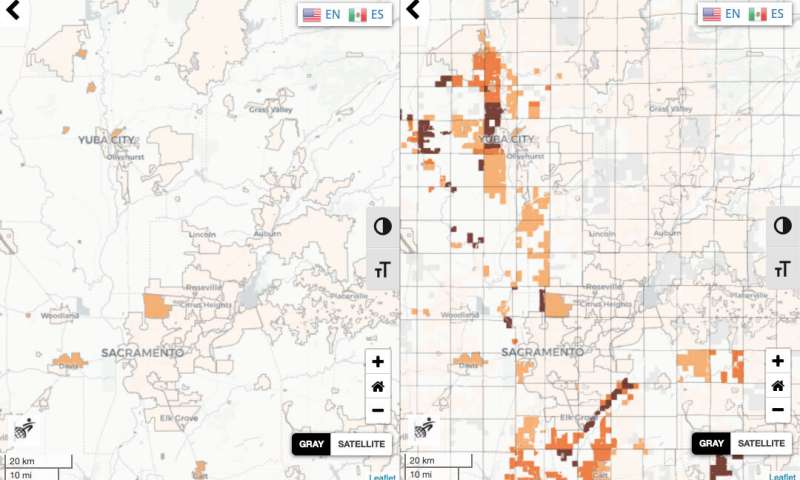According to a new study led by researchers at the University of California, Berkeley, and the University of California, Los Angeles, an estimated 370,000 Californians rely on drinking water that may contain high levels of arsenic, nitrate, or hexavalent chromium, and contaminated drinking water disproportionately affects communities of colour in the state.
The researchers believe that because this study only looked at three major contaminants, the results are likely to underestimate the number of Californians who are affected by unsafe drinking water caused by other substances for which data isn’t as readily available.
In the state of California, access to safe, clean, and inexpensive drinking water has been recognized as a human right since 2012. Federal regulations mandate that community water systems be tested on a regular basis for toxins that are detrimental to human health. Many California community water systems, on the other hand, do not meet regulatory requirements. Furthermore, many mostly rural households get their drinking water from unregulated private home wells.
This study, which appears in the current issue of the American Journal of Public Health, is the first to systematically analyze demographic disparities in drinking water quality across the state and to quantify the average concentrations of multiple chemical contaminants in both community water systems and domestic good areas.
The authors emphasize that resolving inequality in access to safe, clean drinking water would only become more critical as climate change causes longer droughts and reduces water supply in the state.
«California’s Human Right to Water Law articulates the right to safe and affordable drinking water for people served by both community water systems and domestic wells,» said study co-senior author Rachel Morello-Frosch, a professor of public health and environmental science, policy, and management at UC Berkeley. «Our findings strongly imply that a considerable number of people who rely on domestic wells are likely consuming water contaminated to high levels, and they point to areas where we should start conducting targeted assessments to guarantee that the human right to water is effectively fulfilled.»
The researchers used data from California’s community water systems, domestic good licenses, residential tax parcels, building footprints, and census findings to locate homes likely to be serviced by uncontrolled domestic wells. They then estimated pollutant levels for persons serviced by both community water systems and domestic wells using measurements of drinking water and groundwater contamination taken across the state.

Californians may now find out where their drinking water comes from and map levels of arsenic, nitrate, hexavalent chromium, and 1,2,3-Trichrolopropane pollution in groundwater using a new Drinking Water Tool. Screenshots from the tool show levels of arsenic contamination in community water systems in Sacramento and Yuba City (left) and community water systems and domestic wells combined (right) (right). UC Berkeley image by Kara Manke; maps developed by the Community Water Center Drinking Water Tool.
The study concentrated on three chemical pollutants because of their high presence in the state and known toxicity. Arsenic is naturally prevalent in groundwater and can be concentrated when the water table is depleted. Because of fertilizer runoff and industrial animal rearing, nitrate contamination of groundwater is frequent in agricultural areas. Industrial and manufacturing processes produce hexavalent chromium.
According to the study, about 1.3 million Californians (almost 3 1/2 per cent) get their water from domestic wells. More than 150,000 Californians are fed by domestic wells, out of an estimated 370,000 whose water supply was found to possibly contain high quantities of arsenic, nitrate, or hexavalent chromium. The researchers believe that while data on household well water quality is still weak, bridging this data gap is critical to ensuring that all Californians know what is in their water and if it is safe to drink.
«I think a lot of people would be surprised to learn that, despite California’s affluence, we still don’t have universal access to clean drinking water,» said Lara Cushing, an assistant professor of environmental health sciences at UCLA and research co-senior author. «We discovered that areas with a higher proportion of persons of colour had higher levels of drinking water contamination for the three chemical pollutants we studied. Although this pattern has been recorded in community water systems, particularly in the San Joaquin Valley, our research is one of the first to look at the issue statewide and among domestic good communities that are not served by public water systems.»
Scientists from UC Berkeley and UCLA worked along with experts from the California Environmental Protection Agency (CalEPA) and the Community Water Center to conduct the research. The group has created an online Drinking Water Tool that policymakers and the general public can use to find out where their water comes from and to map areas of the state where groundwater sources are likely contaminated with dangerous levels of arsenic, nitrate, hexavalent chromium, and 1,2,3-Trichrolopropane.
«The Drinking Water Tool’s goal is to provide timely access to data that can inform efforts to protect the state’s drinking water and groundwater supplies, particularly in disadvantaged communities where the threats are greatest,» said Clare Pace, a postdoctoral scientist at UC Berkeley and the study’s first author. «In conjunction with the Community Water Center, we’d like to continue to enhance the Drinking Water Tool in response to comments from other groups and decision-makers who can assist ground-truth the data.»
Users can also compare drinking and groundwater quality data with data on community demographics across the state, as well as estimate how drought conditions might affect water supply for domestic wells and community water systems serving less than 10,000 people.
«Our groundwater is becoming a more valuable resource as a result of climate change, and we’re experiencing unprecedented levels of drought and well failures. Even if a well does not fail, a drop in the water table can affect water quality by concentrating contaminants, exacerbating the situation «Cushing explained.






Be the first to comment on "Many Californians still lack access to safe drinking water"